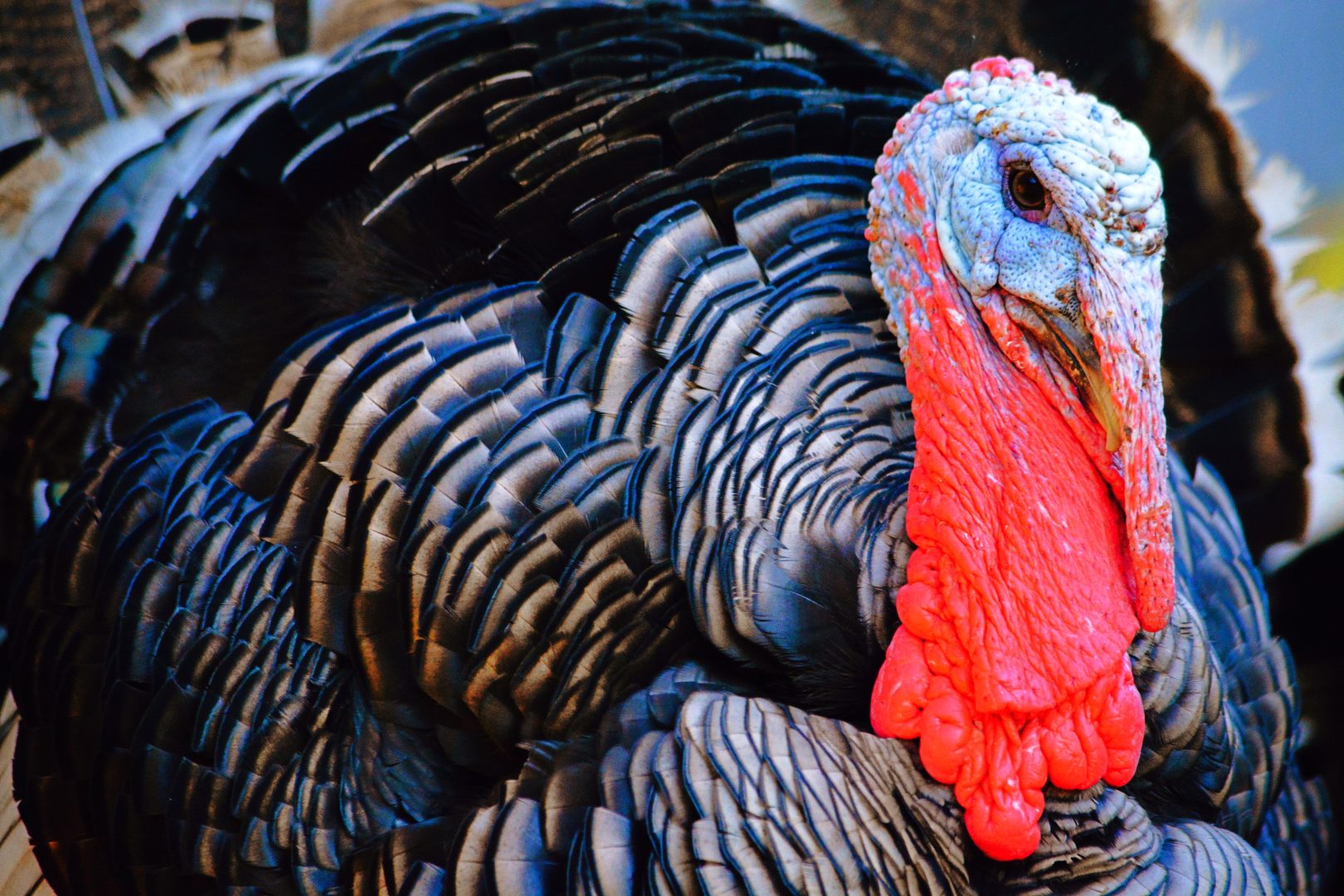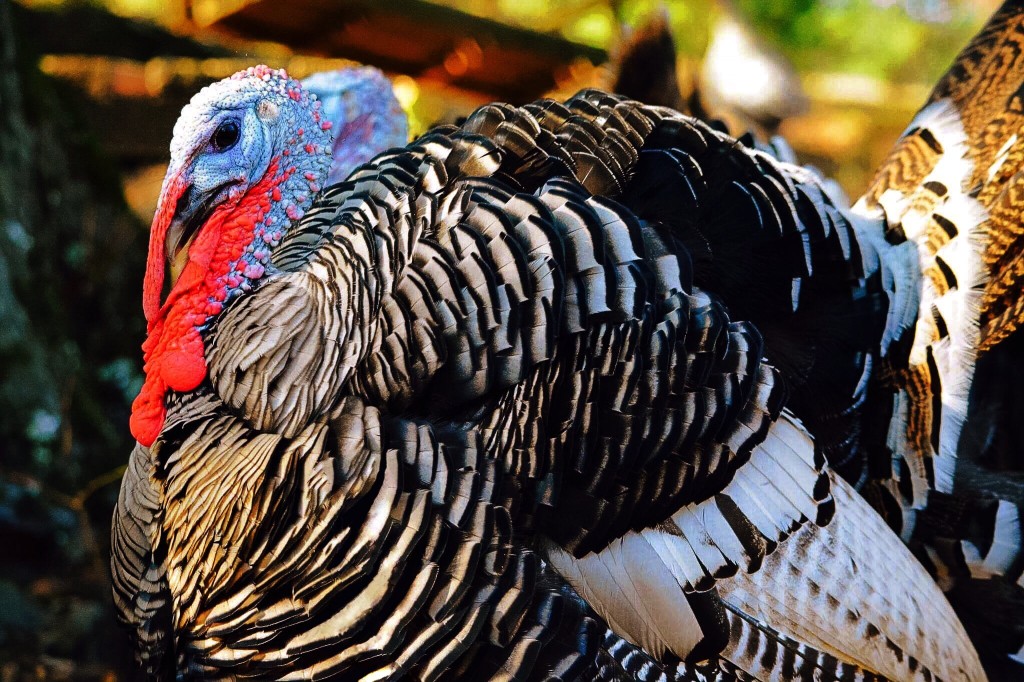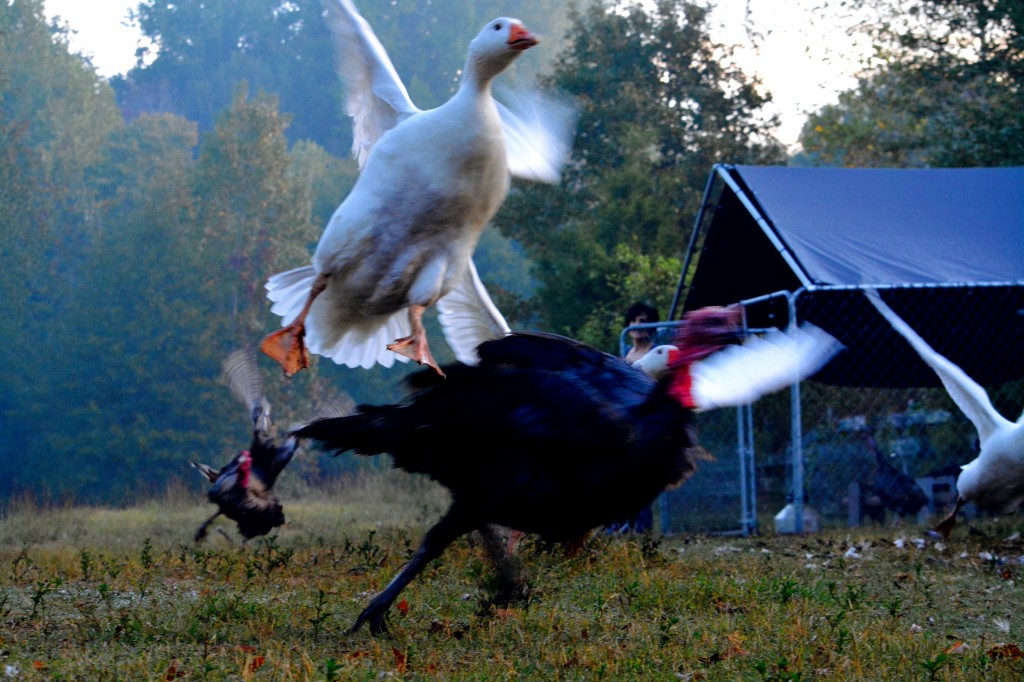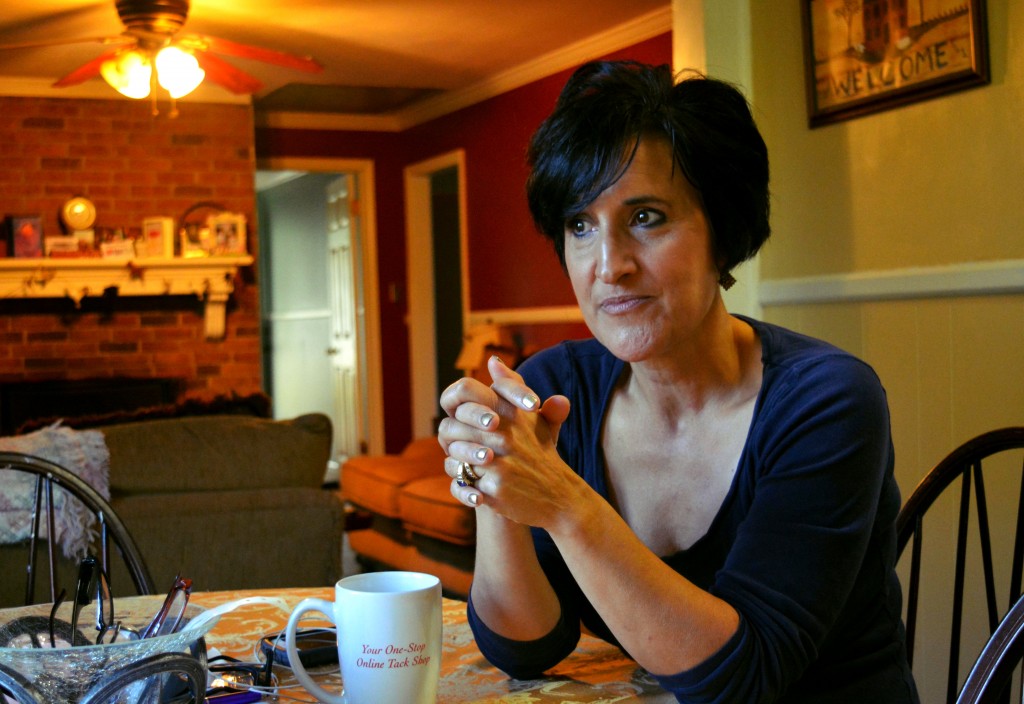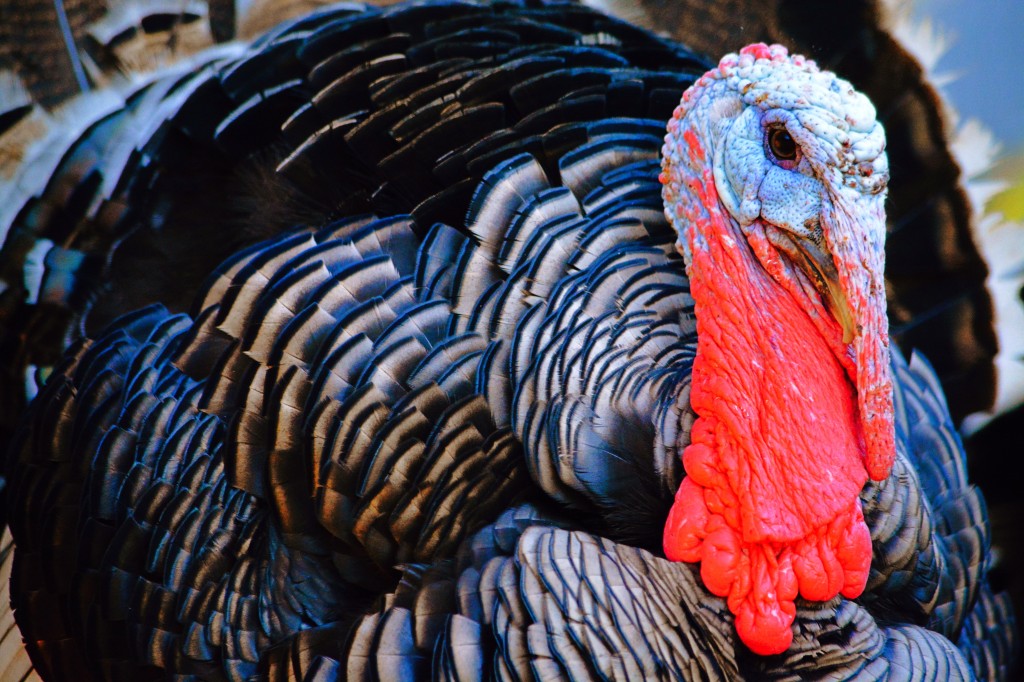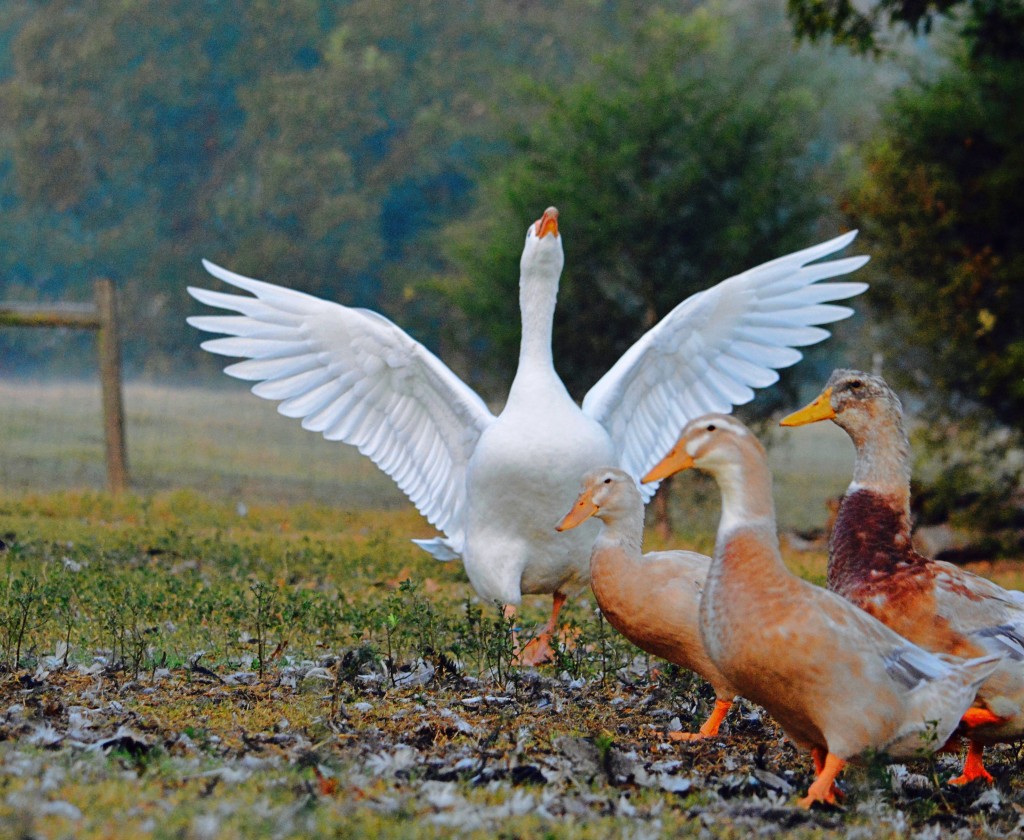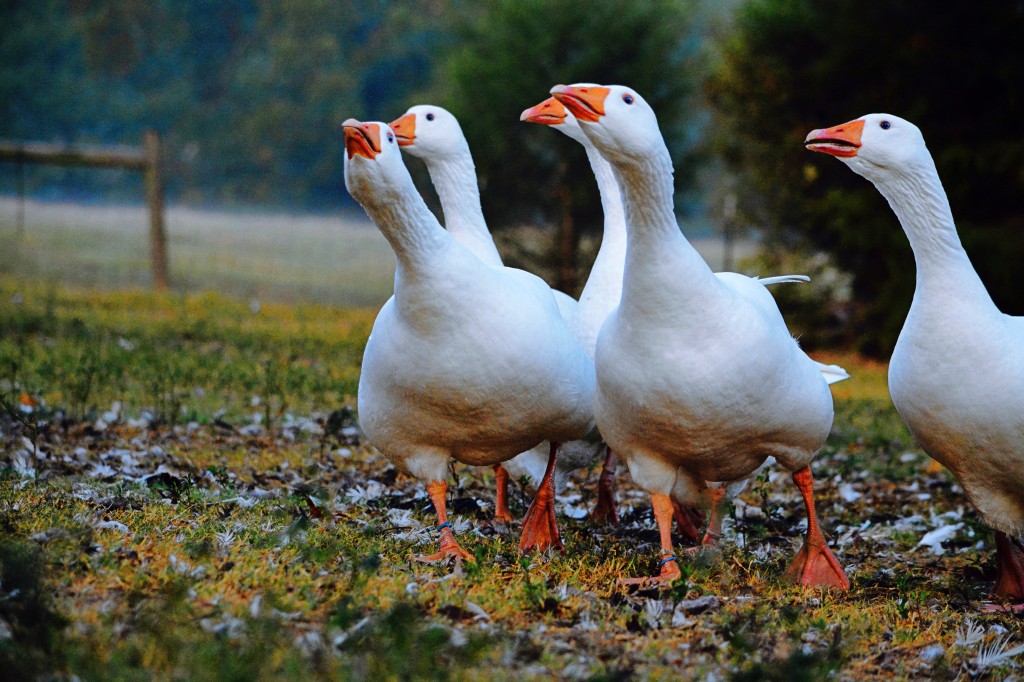By Traci Barr | Oct. 26, 2016 –
“Well, one thing I think you should know is … turkeys are quite, um, directionally challenged.”
This is what Gail Cooley – owner of Patient Wait Farms in Piedmont, South Carolina – tells me as I try to strategically position my body on the dusty ground of her farm, angling myself towards one of the large coops that house her turkeys every night. I do my best to anticipate how, and when, to begin snapping photographs, once Gail has thrown open the coop’s doors. It’s 8 in the morning on a Sunday, late in October. After a relentlessly hot South Carolina summer, the air feels cool. Finally.
“Okay, I’m getting ready to unleash the hounds,” she yells, laughing. I’m laughing, too. And thinking to myself how much I want my photos to capture the whoosh of ravenous turkeys as they launch themselves out of the coop, towards their first meal of the day.
“Ready? Here they come!”
The next thing I know, a gaggle of turkeys and some geese – not to mention a few roosters – are all around me, gobbling, honking, and crowing. Stumbling over each other, kicking up dust, making a chaotic beeline for the food Gail has spread out for them on the ground nearby. I roll around, trying to take the pictures. The rush of birds and feathers is over too soon.
Turns out, when it’s time for breakfast, hungry turkeys know exactly where to go.
Gail then invites me inside her kitchen so we can talk about what it’s like to raise turkeys on a small farm in South Carolina. I immediately recognize her New Jersey accent. Gail tells me she and her husband, Mike, were both born and raised in the suburbs of central New Jersey. “Ah, the Garden State,” I say, pushing up the sleeve of my shirt to give her a peek of the tattoo on my right forearm that reads: Everybody Loves a Jersey Girl.
Gail tells me about being enthralled, as a young child, by her neighbor’s vegetable garden – and about dreaming she’d maybe someday live on a farm. Or possibly run a zoo!
After Gail and Mike got married, Mike’s employer eventually offered him a good job opportunity in the Upstate. About that big decision, Gail says, “God doesn’t always put up an obvious neon sign when it comes to figuring things out.” So, in 1990, she and Mike took a leap of faith, moved all the way to South Carolina – and began to raise their children.
After learning the local supply of Thanksgiving heritage turkeys had already sold out and recognizing the demand for them, she thought, “I’ll just have to raise my own!”
Gail recalls first hearing the phrase “heritage turkey” early in the fall of 2008. Around this time, she wanted to start a side business in order to supplement her retail job of selling cosmetics. After learning the local supply of Thanksgiving heritage turkeys had already sold out and recognizing the demand for them, she thought, “I’ll just have to raise my own!”
I ask Gail if, in 2008, she knew anything at all about how to actually raise turkeys.
“No,” she says, laughing again. “But if we’re conscious, if we’re aware and if we’re open … the answers start to appear. So, I went to a bookstore to try to find a book about raising turkeys. However, the clerk in the store said he didn’t have any books, specifically about that.”
Gail tells me the bookstore employee then thought of something he felt might be helpful to her. She says, “I’ll never forget this part. He led me. I feel I was being led by him.”
Gail’s eyes well up, remembering the young man in the bookstore.
“Where our food comes from matters. How it’s raised matters.”
The clerk directed Gail to Animal, Vegetable, Miracle, Barbara Kingsolver’s important memoir about the pulse of daily life on a family farm. Gail says, “It was an affirmation I was on a journey towards knowing we, all of us, are connected. Where our food comes from matters. How it’s raised matters. Nothing has meant as much to me as reading that book.”
Within short order, Gail attended a heritage-turkey-breeding workshop, sponsored by the Livestock Conservancy, in the Lowcountry town of Walterboro. She was one of only two women in the class. Her retail job of selling lipsticks notwithstanding, Gail’s grit, determination, and true love for animals impressed one of the breeders in attendance.
Insert feeble poultry joke about how he took Gail … “under his wing.”
The breeder sold Gail 20 turkey poults, a mix of Naragansetts and Jersey Buffs. (I interrupt, “Jersey Buffs?” And I think: Small world!)
“I feel responsible for every turkey in the entire flock. This is what I now understand about that sense of connection. There is a purpose, an honor, to it.”
Whereupon she brought the poults home and introduced them to her husband by announcing, “Honey! I’ve got great news!” Thus, Patient Wait Farms was hatched.
Today Gail says, “I’ve always loved animals, even those crazy turkeys. I never really call it ‘work.’ The birds are imprinted on me.”
Gail tells me she feels empathy for even the predators who occasionally manage to grab one in her flock. She says, “He’s just trying to feed his family. On the farm, just like in the retail business, we call that ‘shrinkage.’”
At this point, I tell Gail this is really a story about gratitude – about thankfulness. About why it matters so much to raise Thanksgiving turkeys in a compassionate way. I say to Gail, “We are all connected – turkeys, plants, people. Even when it doesn’t feel that way. Despite the world being a place of such massive waste, over-consumption, and cruelty. Don’t you think?”
She says yes. And then tells me to try to find the deeper meaning in the good shepherd story in the Bible. She says, “I feel responsible for every turkey in the entire flock. This is what I now understand about that sense of connection. There is a purpose, an honor to it.”
Gail tells me, “Every lesson in life has different layers. The need of the one can sometimes be greater than anything. I am supposed to do my part. I am a just a hero in waiting. We are all heroes in waiting.”
Happy Thanksgiving.
All images by Traci Barr.


